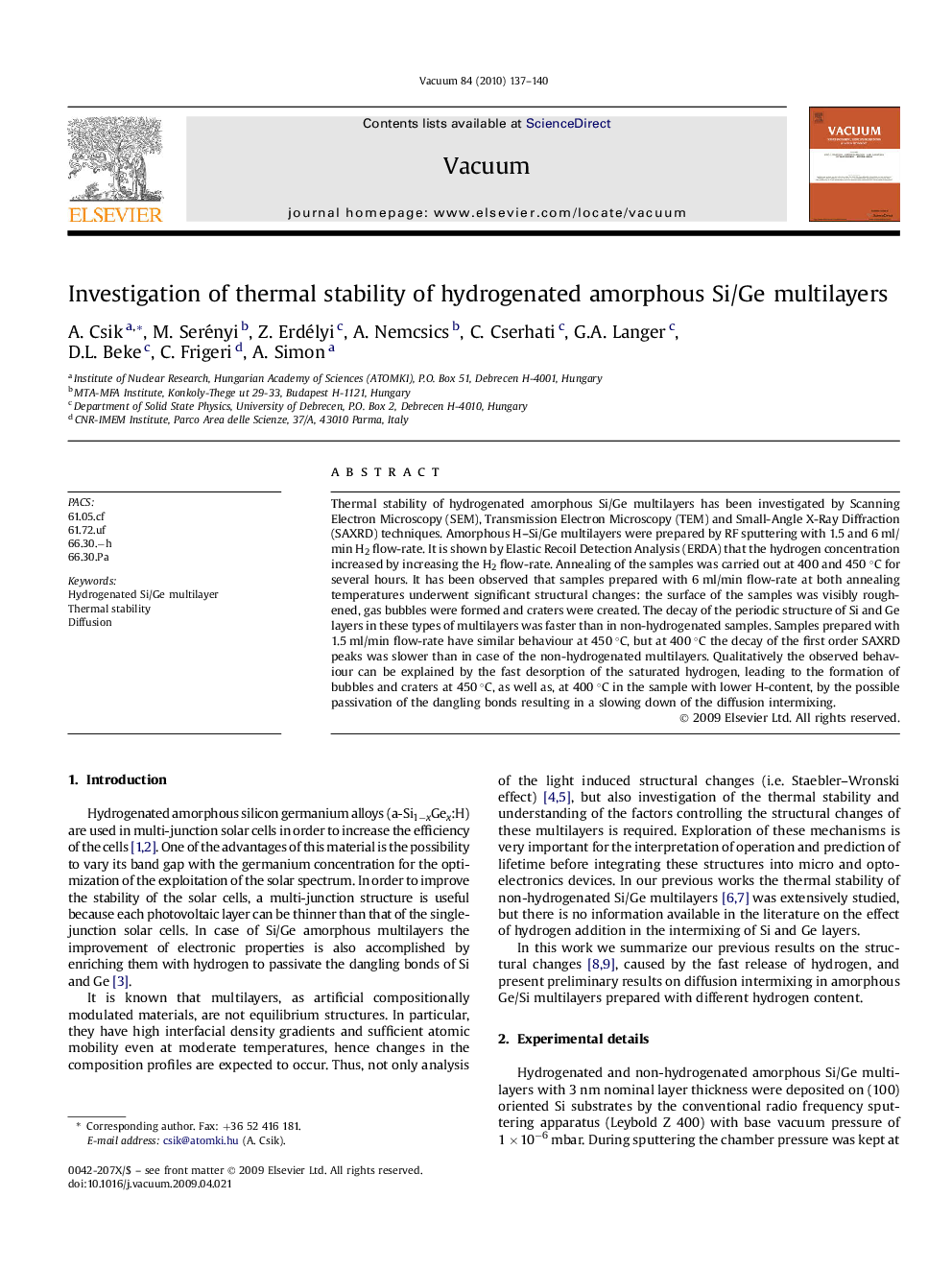| Article ID | Journal | Published Year | Pages | File Type |
|---|---|---|---|---|
| 1689427 | Vacuum | 2009 | 4 Pages |
Abstract
Thermal stability of hydrogenated amorphous Si/Ge multilayers has been investigated by Scanning Electron Microscopy (SEM), Transmission Electron Microscopy (TEM) and Small-Angle X-Ray Diffraction (SAXRD) techniques. Amorphous H-Si/Ge multilayers were prepared by RF sputtering with 1.5 and 6 ml/min H2 flow-rate. It is shown by Elastic Recoil Detection Analysis (ERDA) that the hydrogen concentration increased by increasing the H2 flow-rate. Annealing of the samples was carried out at 400 and 450 °C for several hours. It has been observed that samples prepared with 6 ml/min flow-rate at both annealing temperatures underwent significant structural changes: the surface of the samples was visibly roughened, gas bubbles were formed and craters were created. The decay of the periodic structure of Si and Ge layers in these types of multilayers was faster than in non-hydrogenated samples. Samples prepared with 1.5 ml/min flow-rate have similar behaviour at 450 °C, but at 400 °C the decay of the first order SAXRD peaks was slower than in case of the non-hydrogenated multilayers. Qualitatively the observed behaviour can be explained by the fast desorption of the saturated hydrogen, leading to the formation of bubbles and craters at 450 °C, as well as, at 400 °C in the sample with lower H-content, by the possible passivation of the dangling bonds resulting in a slowing down of the diffusion intermixing.
Related Topics
Physical Sciences and Engineering
Materials Science
Surfaces, Coatings and Films
Authors
A. Csik, M. Serényi, Z. Erdélyi, A. Nemcsics, C. Cserhati, G.A. Langer, D.L. Beke, C. Frigeri, A. Simon,
